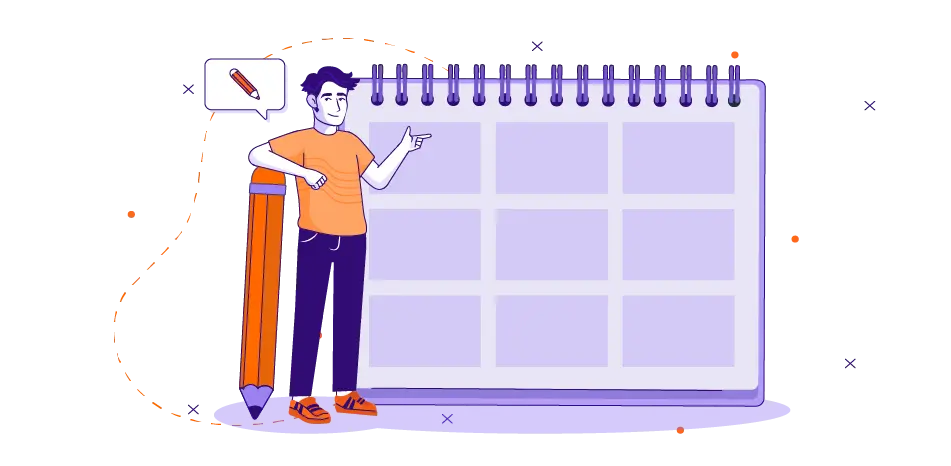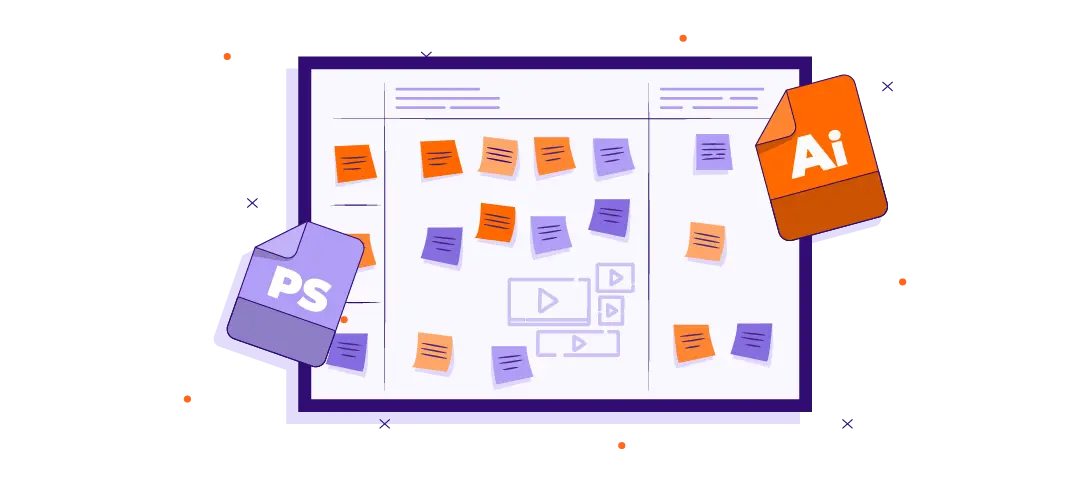
eLearning Storyboard Template and Process Layout
eLearning Storyboard is as basic part to create an awesome eLearning Video Course.
Every Instructional Designer has experienced the disappointment of having a great idea that just does not end up yielding the inventive, stunning final product that they had envisioned. Fortunately, you can overcome these creativity blocks with one simple tool: a storyboard.
With a storyboard, this experience is much easier to prevent. So, let’s get into it.
What is a Storyboard?
A storyboard is a picture-by-picture representation that details how your video idea is going to unfold, most often with notes.
Storyboards are very individualistic; there are many different platforms to choose from based on your individual needs. For example, if you need to storyboard a video that outlines a certain business process, you will probably opt for a more professional template.
That said, the main goal of the storyboard remains consistent no matter what the subject matter is: to determine what is being said during each shot.
In many ways, this approach makes sense. You would not try to tackle a complicated essay without some kind of outline, and a storyboard offers just that: a visual outline to help bring your narrative to life.
With a production team on the same page, you can guarantee that you and your team will catch problems earlier on, leading to a much smoother execution process. This will save you time, money, and energy.

Why create a Storyboard?
There are many benefits to creating an eLearning storyboard. While forcing yourself to sit down and outline your ideas is not the most exciting process, it is an effective way to flesh out your story more thoroughly. After all, the first thing you want to do after coming up with an ingenious idea is to share it with others. Unfortunately, it can be hard to explain the amazing things you are visualizing.
With a storyboard, you can explain your eLearning and Microlearning idea with step-by-step tangible visualizations, ensuring that no details get left out in the process. This will also prevent confusion from your team as they work with you to crystallize your vision in the form of an illustration or script.
Additionally, a storyboard is great for catching logistical problems with your educational video animation idea. Taking the time to expand and look closely at the dialogue, transitions, and concepts in your head can help reveal inconsistencies or production problems.
Types of Storyboards
There are three types of eLearning and Microlearning storyboard templates. Each template offers its own pros and cons, depending on your individual creative needs; there is no right or wrong.
When creating your first couple of eLearning storyboards, pick which one seems the most familiar for you. Here is what you can expect to gain from each template:
Visual Description Script Template
The Visual Description Script Template, while not technically a storyboard template, is perfect for those who have genius ideas but who really, really, really, want to avoid drawing.
Instead, you can write descriptions of what you want to see in your eLearning Video project. Remember: the more detailed your descriptions, the better.
👉 Use our template! with this template, you can insert suggested illustrations, which then either your team or a storyboard artist can create for you.
Printable Template
The Printable Template offers space for a drawing, a description of the action, the dialogue (of VO), and any special effects.
Since this eLearning and Microlearning storyboard template is meant to be printed, it is a great team collaboration tool and easy to pass around. That way, you can give feedback on fellow team members’ ideas.
👉 Use our template! This is an easy to use template free of charge to start drawing!
Photoshop Template
Last but not least is the professional Photoshop storyboard template. Those well-versed in digital creation will be more likely to use this version.
👉 Use our template to start your project! Do not be afraid to start with one template in the beginning and move on to others as you go along. The process of creating an educational storyboard is meant to be fun, creative, and individualized.
How to choose the ideal animation style for your eLearning Video Course?
Read more here: 👉The 5 eLearning animation styles

Steps to Success
With that being said, there are five key steps to creating the eLearning storyboard of your dreams.
1. Brainstorm Ideas
The first thing you will need to do is zero in on a specific idea that seems to best speak to your eLearning Video goals. Chances are, you have already got this step accomplished; however, it may be worth it to spend a few extra minutes to develop and expand your ideas more either by yourself or with your team.
2. Create a Timeline
At this point, you will need to establish your eLearning course story’s beginning, middle, and end. On top of a smooth flow and many well-thought-out ideas, good stories also have an emotional hook. This is where your brainstorming notes can come into play. Refer back to them if there are any gaps in the timeline or lack of substance in your video.
3. Start Creating
After you have your eLearning Video idea well thought out, Now the fun part begins! it is time to get your pen, pencil, or cursor to work. Oftentimes, the hardest part of the creation process is taking that first step. It is vital to not get caught up in perfection here–after all, it is only your outline.
4. Add Details
Once your eLearning course visual ideas are put together on the paper, add details as much detail as possible, to make it easier to understand. This can come in the form of notes beneath each frame, as arrows indicating motion, or adding color.
5. Revise
No storyboard is ever finished after the first draft. You can always use more feedback, even if it is just to expand upon what you have rather than to revise it completely. When it comes down to it, more voices will only make for a more compelling end of your eLearning and Microlearning Video Course.
The Bottom Line
Storyboarding is very difficult for eLearning professionals and even animators. Visual storytelling might seem pretty straightforward and simple— it’s the art/science of communicating a series of messages using graphics and illustrations.
If you need guidance on your Storyboarding for eLearning and Microlearning Videos , Get in touch with Ninja Tropic. We’re more than happy to advise your team on the right content and formatting best practices for effective learning.
